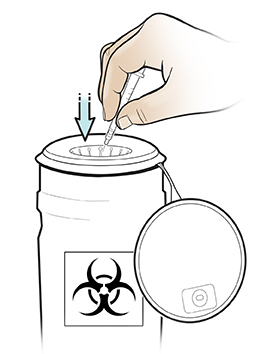Home Infusion Therapy: Handling Supplies Safely
Home Infusion Therapy: Handling Supplies Safely

With infusion therapy, medicines or fluids flow through a flexible tube (catheter) that’s placed in a vein or just under the skin—usually on your arm or chest (infusion site).
Inspecting your supplies
Here are tips for supply inspection:
-
Check the bag or bottle for leaks, cracks, broken seals, and contents that are cloudy or discolored.
-
Check the package for your name and for the correct medicine or fluid. Also check the expiration date.
-
Inspect all supplies to be sure they’re sealed, clean, and dry, and have no cracks or tears.
Storing your supplies
Here are tips for supply storage:
-
Keep your supplies in a clean, dry place that’s out of the reach of children and pets.
-
Store medicines or fluids as directed on the label. Some may need to be refrigerated.
Disposing of used supplies
Here are tips for supply disposal:
-
Seal used dressings and tubing in a plastic bag. Throw the bag directly in the trash—unless the nurse tells you otherwise.
-
Put used needles and syringes directly into the sharps container. You will be instructed how to dispose of the sharps container once it is full.
Updated:
March 16, 2019
Reviewed By:
LoCicero, Richard, MD,Sather, Rita, RN